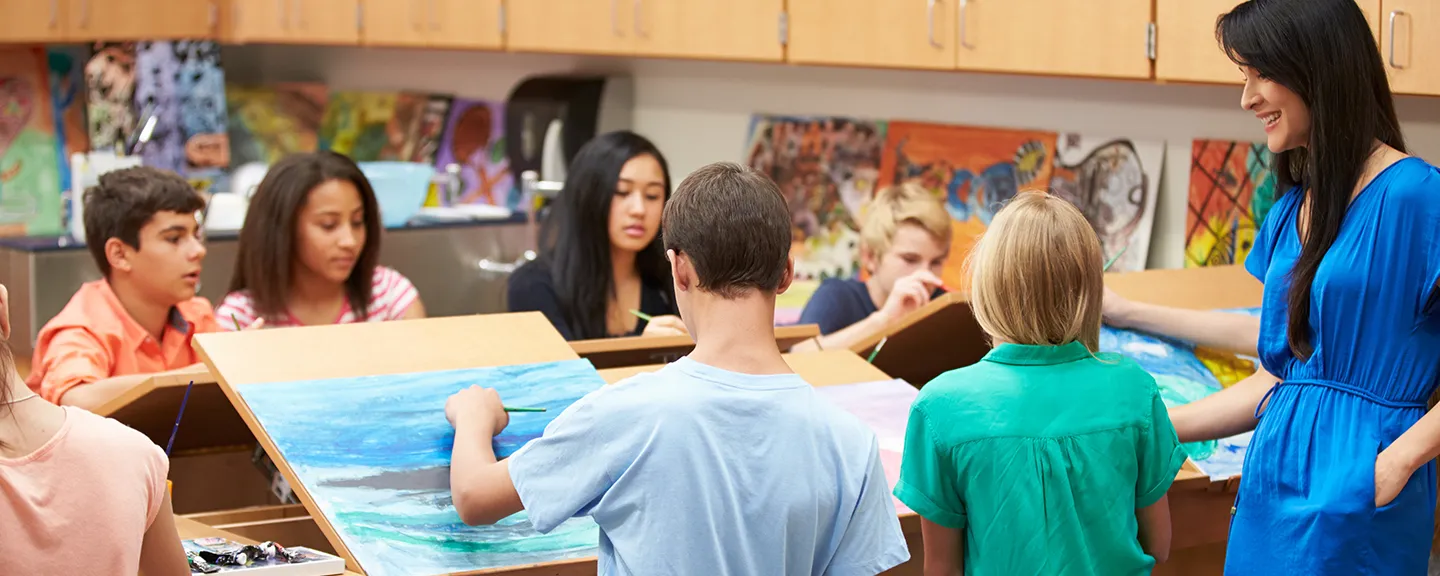- Home
- >
- APU Articles
- >
- News Article
How a Master’s in Art Education Can Elevate Your Art and Teaching
August 20, 2020 | Written By Ashley Eneriz

For those who desire to foster these creative connections, a master’s in art education offers current and aspiring educators the knowledge to advance the power of creativity and art in their classrooms.
Learning to Be an Advocate for Art in Your School
There are many life-changing benefits of art education. For instance, students that receive art education typically have fewer disciplinary problems, better writing scores, more motivation for college, and deeper empathy for others. Art education has the ability to transform a school’s climate—but often, school boards can’t find the time, funds, or energy to devote to integrating successful art education programs.
This is why art advocates are so important.
Earning a master’s degree in art education won’t just equip you to teach art. You’ll learn how to be an advocate for art and students alike. Azusa Pacific University alumna Kaley Johnson, M.A. ’20, is just one graduate who was inspired to advocate for art education in schools. “When I think of advocacy, I think of how each and every class taught me of a different way art education takes place in the world, impacts the world, or is needed in society,” she said.
A fellow APU alumna, Kelsey Wengel, M.A. ’20, currently works as a visual arts teacher and district art lead at a California high school. She credits her professional growth to the university’s curriculum, noting that, “This last year, I found myself in the center of arts advocacy at my school district, making boardroom speeches, writing letters, hosting professional development, joining county commission meetings, and doing things that I never thought I’d be doing—and it was because of this program.”
Bringing Joy to the Classroom
Wengel also shared that she works to ensure her classroom is a happy, inclusive space where students of all abilities are encouraged to participate. Art education acts as a level playing field for students because no one needs superior math or reading skills to participate and create. It’s also in the art room where many struggling students discover their strengths and gifts in life.
When art instruction is given to a group of students, each person will create something unique. This allows both the teacher and class to see that every student is special in their own way. They are more than a test score—they are, in essence, an ever-progressing work of art themselves.
Is a Master’s in Art Education for Teachers or Artists?
While APU’s Master’s in Art Education was originally designed for artists who want to teach, the program is also open to teachers who want to better understand and incorporate art education into their classrooms. You don’t need to hold an undergraduate art degree to enroll!
Meet the Faculty: Erin Weaver, M.A.
The 30-unit low-residency program allows students flexibility to take all online courses throughout the year while completing two, one-week summer intensive practicums at APU’s main campus in Azusa. APU alumna Ana Cervantes, M.A. ’20, was originally drawn to the program because it blended the low-residency format with a summer intensive. “Summer intensives were exactly what I needed to expand and feed my creative soul as an educator,” she said.
Another APU graduate, Megan Maher, M.A. ’20, explained, “I felt like a lot of the courses and themes were directly applicable to my teaching, and I am happy that I now have created so many more lessons and resources to use in my classroom.”
Have you been looking for a program that combines your passion for teaching and art? Learn more about the coursework and program requirements for the Master of Arts in Art Education at Azusa Pacific University.